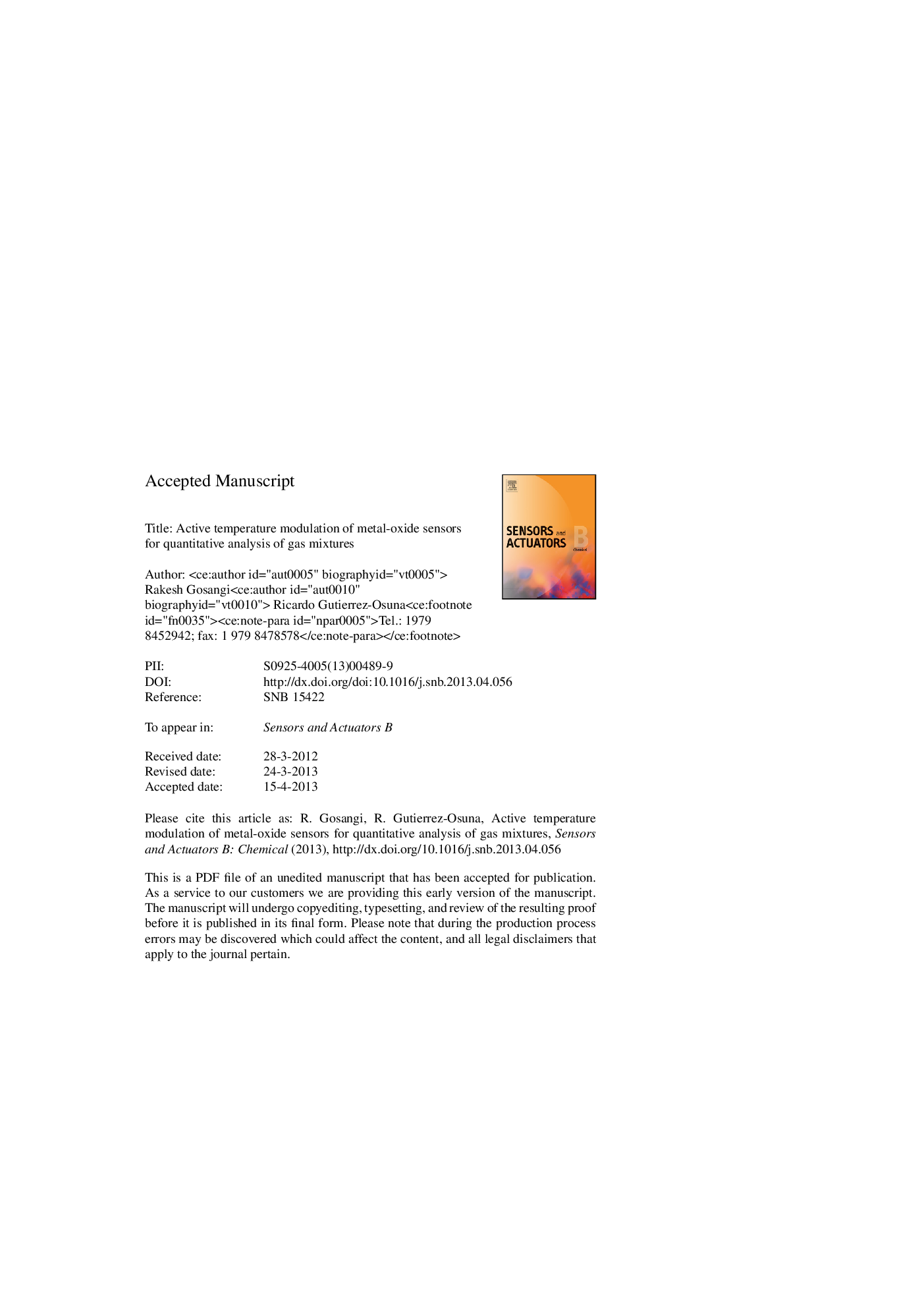| Article ID | Journal | Published Year | Pages | File Type |
|---|---|---|---|---|
| 7148745 | Sensors and Actuators B: Chemical | 2013 | 35 Pages |
Abstract
We present an active sensing method for quantitative analysis of gas mixtures using metal-oxide (MOX) chemical sensors. The method allows a MOX sensor to adapt its operating temperature in real time so as to sequentially reduce uncertainty in the concentration estimates. We formulate the problem as one of probabilistic state estimation coupled with a myopic optimization algorithm. At each iteration, the algorithm estimates the expected reduction in entropy for each sensing action (i.e., operating temperature) and selects the best such temperature. We first evaluated the proposed method on a simulated binary mixture problem using a computational model of MOX sensors. In these simulations, we compared the active sensing approach against conventional sequential forward selection (SFS) strategies. We then experimentally validated the method on a Taguchi gas sensor to quantify mixtures of two organic compounds. Our results indicate that the active sensing algorithm can obtain comparable estimation performance as SFS with significantly fewer measurements. In addition, since active sensing selects features on the fly, it is also more robust to experimental noise than off-line subset selection strategies.
Related Topics
Physical Sciences and Engineering
Chemistry
Analytical Chemistry
Authors
Rakesh Gosangi, Ricardo Gutierrez-Osuna,
